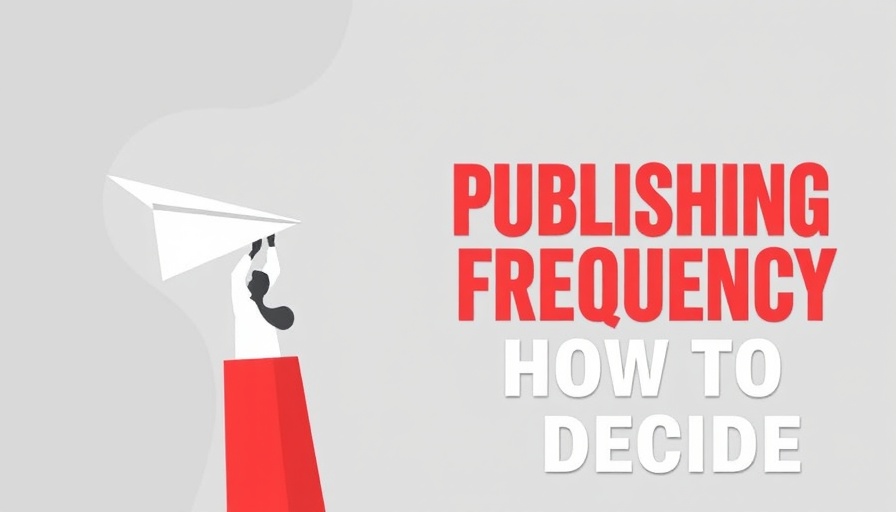
Finding Your Unique Publishing Rhythm
Every digital marketer knows the importance of a robust publishing strategy, yet the ideal frequency for sharing content on platforms can often feel elusive. With no universal answer, creating an effective publishing schedule requires an understanding of audience habits and content goals. This exploration of publication frequency aims to help growth hackers, digital marketers, and AI innovators harness their content's true potential through targeted timing.
Understanding Audience Engagement
The key to determining optimal publishing frequency lies in understanding your target audience's engagement patterns. Consumers are not all alike; their content consumption habits fluctuate based on numerous factors such as personal interests, the type of platform, and even geographical location. By leveraging data analytics tools or conducting surveys, marketers can unearth insights into when their audience is most active, allowing for tailored content delivery.
The Role of Data in Frequency Decisions
Gathering data-driven insights is crucial when strategizing content frequency. According to HubSpot's 2024 State of Social Media Report, various platforms showcase differing optimal posting frequencies. For instance, TikTok allows for multiple daily postings for B2B, while B2C content performs best with daily updates. Understanding these nuances enables marketers to adopt strategies relevant to their specific audience, maximizing engagement and reach.
Cross-Comparative Analysis of Social Platforms
Each social platform offers unique user interactions which directly influence optimal posting frequency. For example, B2B brands on LinkedIn may find success with several updates per week, while Instagram encourages a more frequent posting schedule. By conducting a cross-comparison of popular platforms like Facebook, Instagram, and YouTube, marketers can make informed decisions about where and how often to post, ensuring their content is well-received.
Trial, Error, and Adaptation
Marketers should embrace a culture of experimentation when it comes to publishing frequency. Testing different schedules and assessing audience response is paramount. Regular analyses of engagement metrics—such as likes, shares, and comments—act as feedback loops to inform future strategies. The flexibility to adapt to audience feedback can foster deeper engagement and strengthen audience relationships.
Future Trends in Content Publishing
With technology continuously evolving, new trends are emerging that will reshape content publishing. Innovations in AI and machine learning may one day allow for automated content scheduling tailored to peak user engagement times. As these technologies develop, incorporating them into publishing strategies will ensure that brands remain relevant and impactful in their communication efforts.
 Add Row
Add Row  Add
Add 




Write A Comment